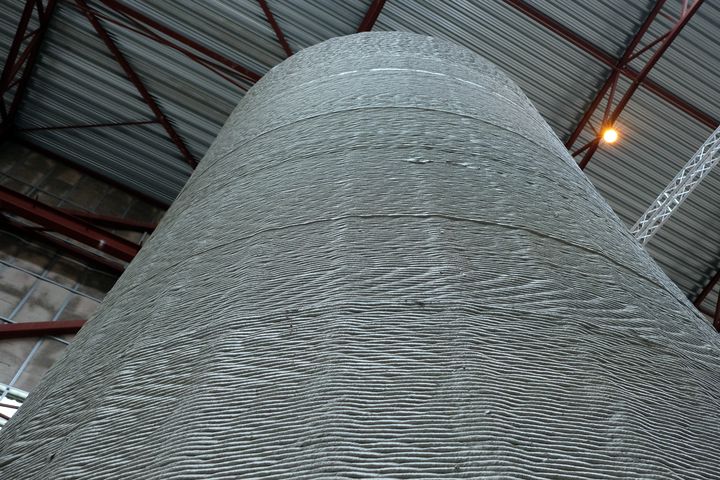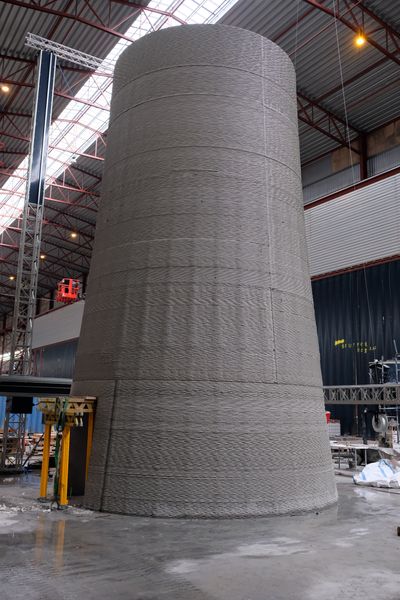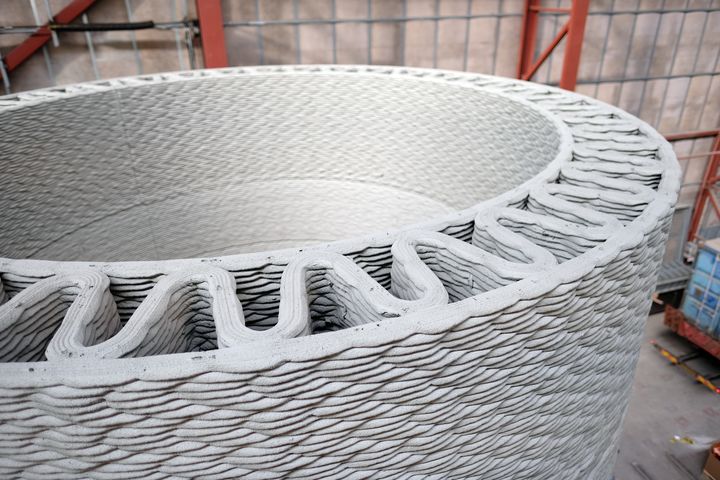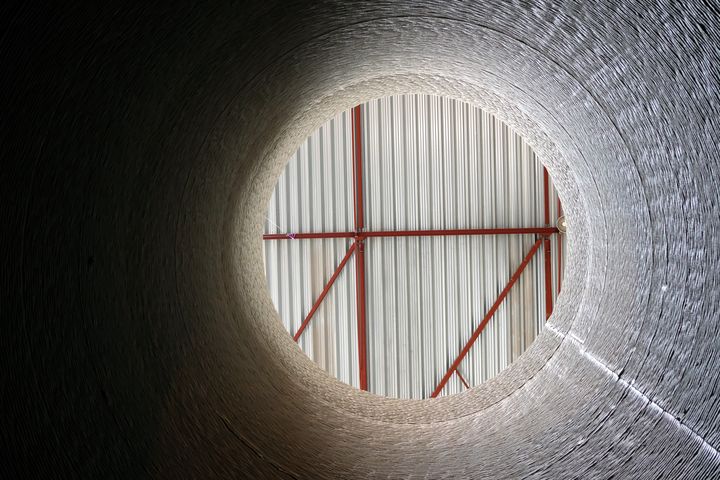
News from COBOD indicates they are to assist in the production of massive wind turbines by 3D printing large tower bases.
COBOD is a Danish company specializing in construction 3D printing. Their massive 3D printer, the BOD2, is able to precisely extrude concrete to form large structures that could form buildings, walls, or other concrete structures without the use of molds.
COBOD announced an arrangement with LafargeHolcim, a concrete provider, and GE Renewable Energy to produce enormous wind turbine towers. Note that GE Renewable Energy is not GE Additive, the 3D printing company we often write about on these pages; GE is a rather large conglomerate with many parts.
Wind Turbine Sizes
Wind turbines are most efficient with the largest possible blade length, and that’s why you often see large turbines rather than groups of many small turbines. But in order to have a long blade length, you must have a tower just a bit taller upon which to mount it. You’ll notice that turbine blades come close to the ground, but only to a designated safety level.
Since typical large-sized wind turbine towers top out at 100m or less, it means the maximum blade length can be only up to ~100m, or less.
Turbine towers normally have a wide base to support the upper portions, and then have a tapering profile as the elevation rises. At the top will be the turbine itself, attached to the three blades.
Why doesn’t someone build turbines of larger sizes? It turns out there is a practical limitation. Turbine towers are built from pre-fabricated metal segments that are bolted together. These segments are manufactured at a factory and transported over land to the tower construction site.
The problem is that there is a maximum practical width for transporting segments. This width is only 4.5m, limiting the maximum tower base diameter. It’s possible to transport larger diameters, but this requires special road transport protocols that are more expensive. This is an expense that is not desirable when you are installing perhaps dozens or hundreds of turbines in a large wind farm.
With a maximum tower base diameter of 4.5m, there is an implied maximum height for the tower and consequently a maximum blade length.
COBOD Turbine Tower

In the new project, COBOD will be using their BOD2 construction 3D printer to lay down the base segment of the tower. This is the widest portion of the tower, and since the BOD2 will be printing on site, it can be of a larger diameter.
It’s not clear exactly what that larger diameter is, but COBOD says the tower above the base will continue to use segments of maximum 4.5m diameter, and the height of the tower could be as high as a stratospheric 200m.

With a 200m tower, blades could be theoretically up to 200m (less ground safety clearance) in length, generating a corresponding efficiency increase in the turbine’s electrical output. Of course, this leads to another technical issue: how do you make the blades strong enough to support themselves at 200m length? And do so without flying apart at high rotational speeds? And be lightweight at the same time? That’s a problem for others, I’m afraid.
COBOD Turbine Tower Implications

This is a very important project, as it could have several key implications.
One is that if the concept works, we might see a switch to the larger-sized turbine format for greater electrical efficiency. There could be much more electricity generated from a given wind farm area.
How much more? Using an online wind turbine power calculator, I modeled three scenarios using 20m/s wind:
- Scenario 1: 50m blade generates 15kW
- Scenario 2: 100m blade generates 60kW
- Scenario 3: 150m blade generates 136kW
As you can see, the larger blades are very significantly more powerful. By tripling the size of the blade you can apparently gain 9X the electricity. To put this in perspective it means a wind farm of 111 150m blade turbines is equivalent to 1,000 50m blade turbines taking up 9X the footprint. Anyone owning land for a wind farm would know what to do in this situation: get more power from the same amount of land, and although erecting larger turbines is more challenging, you could have 9X fewer to do.
The second implication is on COBOD: if this takes off as I think it could due to the above calculations, it could generate a massive amount of business for the 3D printer manufacturer. It might eventually mean we’d see a COBOD 3D printer on site at every wind farm construction project in the world.
That’s a lot of 3D printers.
Via COBOD
